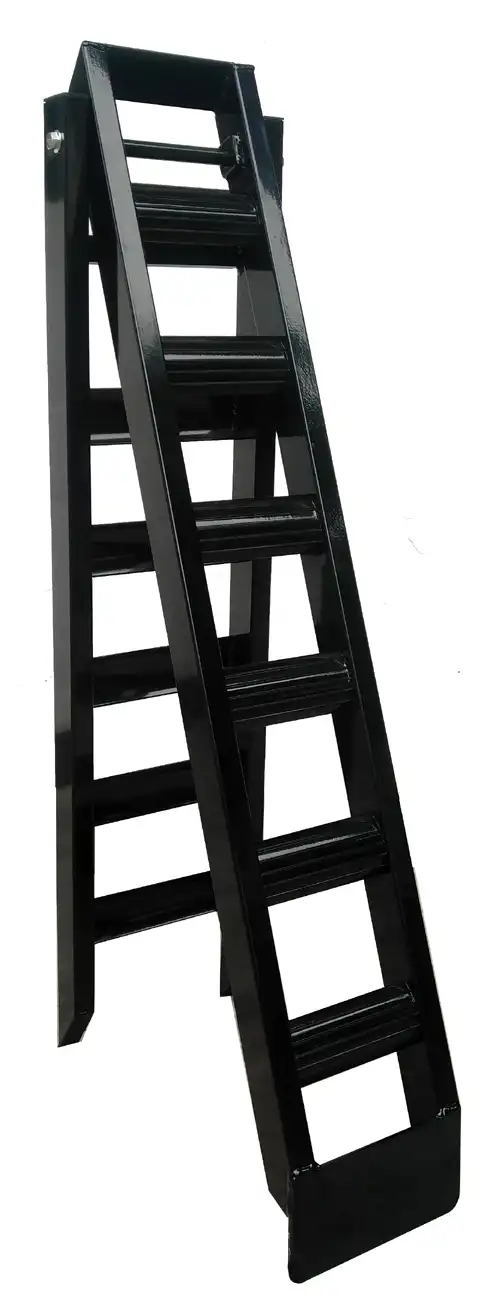Choosing the Right Motorcycle Loading Ramp
Understanding Ramp Types and Materials
When it comes to selecting a motorcycle loading ramp, you'll encounter various types and materials. Aluminum ramps are popular due to their lightweight nature and durability. Folding ramps offer convenience for storage and transport, while arched ramps provide a gentler incline. Steel ramps, though heavier, offer exceptional strength for larger motorcycles. Consider your specific needs, including your bike's weight and the loading surface, to determine the most suitable ramp type.
Weight Capacity and Length Considerations
A crucial factor in motorcycle ramp selection is ensuring it can support your motorcycle's weight. Always choose a ramp with a weight capacity that exceeds your bike's weight by a significant margin for added safety. The length of the ramp is equally important – longer ramps create a shallower angle, making loading easier and safer. As a rule of thumb, aim for a ramp that creates an incline of no more than 15 degrees when in use.
Safety Features to Look For
Prioritize ramps with built-in safety features. Look for non-slip surfaces or treads that provide traction in various weather conditions. Serrated cross rungs can offer additional grip for your tires. Side rails or lips along the edges of the ramp can prevent accidental roll-offs during loading. Some ramps also come with adjustable support brackets or stability straps, which enhance security during use.
Proper Setup and Preparation
Securing the Ramp to Your Vehicle
Before attempting to load your motorcycle, it's paramount to ensure your ramp is securely attached to your vehicle. Most motorcycle ramps come with safety straps or hooks designed to connect the ramp to your truck or trailer. These should be firmly fastened to prevent the ramp from slipping during use. Double-check that the connection points on your vehicle are sturdy and can withstand the forces involved in loading.
Preparing the Loading Area
The surface on which you're loading your motorcycle plays a significant role in safety. Ensure the ground is level and free from debris that could destabilize your bike or cause you to lose footing. If possible, choose a paved surface for maximum stability. In situations where you must load on softer ground, consider using plywood sheets under the ramp's base to distribute weight and prevent sinking.
Pre-Loading Checklist
Develop a pre-loading checklist to ensure you've covered all safety bases. This should include verifying that your motorcycle is in neutral, checking tire pressure for optimal traction, and ensuring your bike's stand is secure. Remove any loose accessories that could fall off during loading. It's also wise to recruit a spotter to assist you, especially if you're new to using a motorcycle loading ramp.
Loading and Unloading Techniques
Proper Body Positioning
Correct body positioning is fundamental to safely loading or unloading your motorcycle with a motorcycle loading ramp. The recommended stance is to stand on the left side of the bike, keeping a firm grip on the left handlebar while your right hand remains on the throttle. This balanced position ensures steady control as you guide the motorcycle forward or backward. Keep your posture upright, your knees slightly bent, and your steps steady to maintain stability. Solid footing throughout the process significantly reduces the risk of imbalance or accidental tipping.
Throttle and Clutch Control
Smooth operation of the throttle and clutch plays a vital role in maintaining control on the ramp. When riding up, apply gradual, steady throttle while carefully feathering the clutch to balance momentum without over-accelerating. This prevents unwanted wheel spin and ensures the bike moves at a manageable pace. For unloading, allow engine braking to assist your descent, using the clutch and rear brake for fine adjustments. Controlled inputs are key to avoiding jerky movements. Practicing these maneuvers beforehand in a safe setting builds confidence and precision for real situations.
Emergency Procedures
Even with thorough preparation, unexpected incidents may occur when loading or unloading a motorcycle. It is important to understand how to respond quickly. Familiarize yourself with the ramp’s quick-release mechanisms and rehearse emergency stops. If the motorcycle begins to lean uncontrollably, it is generally safer to release it rather than risk injury attempting to hold it up. Always wear proper protective gear such as gloves, boots, and long sleeves. These precautions help minimize injury in case of mishaps, ensuring safety remains the top priority during the process.
Conclusion
Mastering the use of a motorcycle loading ramp or moto ramp is an essential skill for any rider who needs to transport their bike. By choosing the right equipment, preparing thoroughly, and employing proper techniques, you can ensure a safe and smooth loading process. Remember, practice makes perfect – take the time to familiarize yourself with your ramp and loading procedures in a controlled environment. With these safety tips in mind, you'll be well-equipped to handle your motorcycle transport needs confidently and securely.
Contact Us
Ready to elevate your motorcycle transport game? For more information on our range of high-quality motorcycle ramps and accessories, don't hesitate to reach out. Contact us at info@runva.com.cn to discover how we can support your motorcycling journey with top-notch equipment and expert advice.

_1737625693698.webp)


